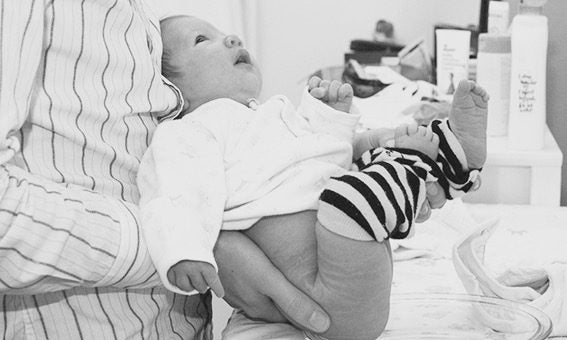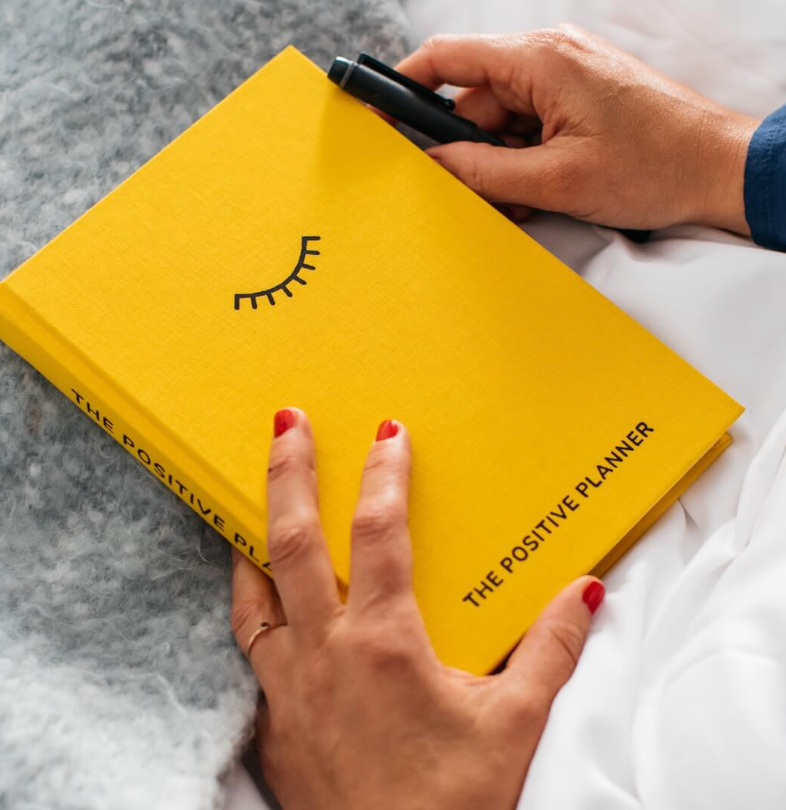
Baby-led potty training (BLPT) goes by many different names, and you may have heard it referred to as elimination communication (EC) or nappy free baby. Essentially, it’s just the practice of offering your baby the opportunity to pass waste outside of his nappy, and helping him to do that in a comfortable and manageable way.
Many parents already give their baby nappy-free time, but not so many know that we can both encourage and help babies wee and poo. It’s much like burping a baby – eventually babies will burp by themselves, but they will find it easier if we help them into a comfortable position.
How it works – in a nutshell

Babies are born with many different reflexes that help them to function. All newborns have a reflex to open the sphincters and pelvic floor when cooler air meets their nappy region and also when they are held in a ‘squatting’ position.
If we parents ‘hold them out’ in a squatting position without their nappy, they will most likely pass waste if they have a full bladder or bowel.
Babies make connections from the word go. This means that they quickly associate being held out and urinating and defecating, so that as the reflex fades (from around 3-4 months) passing waste becomes a conditioned response. They often begin to ‘let us know’ when they need to go. As they get older (from around one year) they can begin to release the sphincters voluntarily. This is the start of true potty independence.
Not a new concept
Not so long ago – perhaps when your mother was a baby – holding your baby out was a no-brainer. Virtually everybody did it. (In 1958 a survey of 5000 British mothers found that 60% used a potty before baby turned one month).
Catching a wee or poo in a potty rather than in a nappy makes for a much more pleasant experience for both baby and parent. The likelihood of nappy rash is greatly reduced, and the clean-up operation is much easier and hygienic.
However, the advent of disposable nappies taking the hassle out of washing, coupled with health professional advice to delay, meant that parents began potty training later and later. In two short generations the knowledge and skill about using a potty from birth was virtually lost.
Why bother
Using the potty isn’t just for the cloth nappy users of times gone by, however. There are many other benefits – some of them subtle and some unexpected. When we know how to help our baby use the potty, this becomes another tool in our toolbox. Little babies especially are very inward-looking: we watch them grimace and sigh as they respond to unknown sensations in their bodies. Very often the need to pass wind or a bowel movement makes them unsettled and uncomfortable. Full bladders can make them agitated. Holding them out and helping them to relieve themselves and can soothe fussiness. It can also prevent babies from experiencing mild constipation by encouraging them to defecate regularly. Holding them out becomes an act of partnership between parent and baby as they learn to communicate their experience and we learn how to read them. In short, we get to know our babies better.
How often do I need to do it?
Using the potty doesn’t have to be an all or nothing affair. Many parents just use the potty when it is convenient them: for example, before bathing baby or before nappy free time; or each time they change baby. Some parents only use the potty very occasionally – perhaps when baby is fussy with wind in the night, is constipated, or won’t settle on the breast.
Other pare

nts find that the method works so well for them that they do it much of the time, and very rarely have to change a dirty or wet nappy. The tool can be picked up or left to the side depending on the needs and circumstances of each family.
Using a nappy
It is perfectly usual to use a nappy in between potty times. You may find that as you get more confident and tuned into your baby’s rhythms and ways of communicating, you spontaneously offer more nappy-free time. If you continue offering the potty into your baby’s second year, it’s likely that you will be able to transition out of nappies earlier than you might have otherwise.
How to get started
It’s very easy to get started with baby-led potty training. Basically you just have to take your baby’s nappy off, and try holding her over a potty (ice-cream tub, bowl, toilet, bush etc). Perhaps you will get a ‘catch’ straight away!
You will need to approach the method slightly differently depending on the age of your baby.
0–3 months
It’s very easy to get started in this period as the reflexes are still in place. This means that even if you simply hold your baby out randomly, it’s quite likely you will get some catches sooner rather than later. Baby will learn to associate the hold and the act of weeing and pooing, and will soon cotton on to the idea.
3-9 months
You may need a little more perseverance at this age. You might find it helpful to spend some time observing your baby – make a mental note of when she tends to wee and poo, and what signals she may make beforehand. It’s also a good idea to offer opportunities at likely times:
- After (or during) milk or a meal
Upon waking from sleep
After being in a sling
After being in the car seat or bouncer
From 9 months
Introducing your baby to the potty can be more challenging once they are mobile, as they are more concerned with the outside world than their own bodily functions. Also, they will have become conditioned to passing waste in their nappy, so they may well have begun to ignore the sensations of going. Allowing your baby to spend time naked can really help them to re-connect with their bodily functions. Offer them the potty at likely times (see above) and gently encourage them to sit on a potty when you see them passing waste. Make sure you make the experience fun for them with lots of attention and toys.
Amber Hatch is a parent, teacher and writer. She offers consultations and workshops on Baby-led Potty Training. She is also a meditator and author of
Nappy Free Baby and
Mindfulness for Parents. For more information and free resources on BLPT, and Amber’s other books, please visit
www.amberhatch.com


 Baby-led potty training (BLPT) goes by many different names, and you may have heard it referred to as elimination communication (EC) or nappy free baby. Essentially, it’s just the practice of offering your baby the opportunity to pass waste outside of his nappy, and helping him to do that in a comfortable and manageable way.
Many parents already give their baby nappy-free time, but not so many know that we can both encourage and help babies wee and poo. It’s much like burping a baby – eventually babies will burp by themselves, but they will find it easier if we help them into a comfortable position.
Baby-led potty training (BLPT) goes by many different names, and you may have heard it referred to as elimination communication (EC) or nappy free baby. Essentially, it’s just the practice of offering your baby the opportunity to pass waste outside of his nappy, and helping him to do that in a comfortable and manageable way.
Many parents already give their baby nappy-free time, but not so many know that we can both encourage and help babies wee and poo. It’s much like burping a baby – eventually babies will burp by themselves, but they will find it easier if we help them into a comfortable position.
 Babies are born with many different reflexes that help them to function. All newborns have a reflex to open the sphincters and pelvic floor when cooler air meets their nappy region and also when they are held in a ‘squatting’ position.
If we parents ‘hold them out’ in a squatting position without their nappy, they will most likely pass waste if they have a full bladder or bowel.
Babies make connections from the word go. This means that they quickly associate being held out and urinating and defecating, so that as the reflex fades (from around 3-4 months) passing waste becomes a conditioned response. They often begin to ‘let us know’ when they need to go. As they get older (from around one year) they can begin to release the sphincters voluntarily. This is the start of true potty independence.
Babies are born with many different reflexes that help them to function. All newborns have a reflex to open the sphincters and pelvic floor when cooler air meets their nappy region and also when they are held in a ‘squatting’ position.
If we parents ‘hold them out’ in a squatting position without their nappy, they will most likely pass waste if they have a full bladder or bowel.
Babies make connections from the word go. This means that they quickly associate being held out and urinating and defecating, so that as the reflex fades (from around 3-4 months) passing waste becomes a conditioned response. They often begin to ‘let us know’ when they need to go. As they get older (from around one year) they can begin to release the sphincters voluntarily. This is the start of true potty independence.
 nts find that the method works so well for them that they do it much of the time, and very rarely have to change a dirty or wet nappy. The tool can be picked up or left to the side depending on the needs and circumstances of each family.
nts find that the method works so well for them that they do it much of the time, and very rarely have to change a dirty or wet nappy. The tool can be picked up or left to the side depending on the needs and circumstances of each family.





